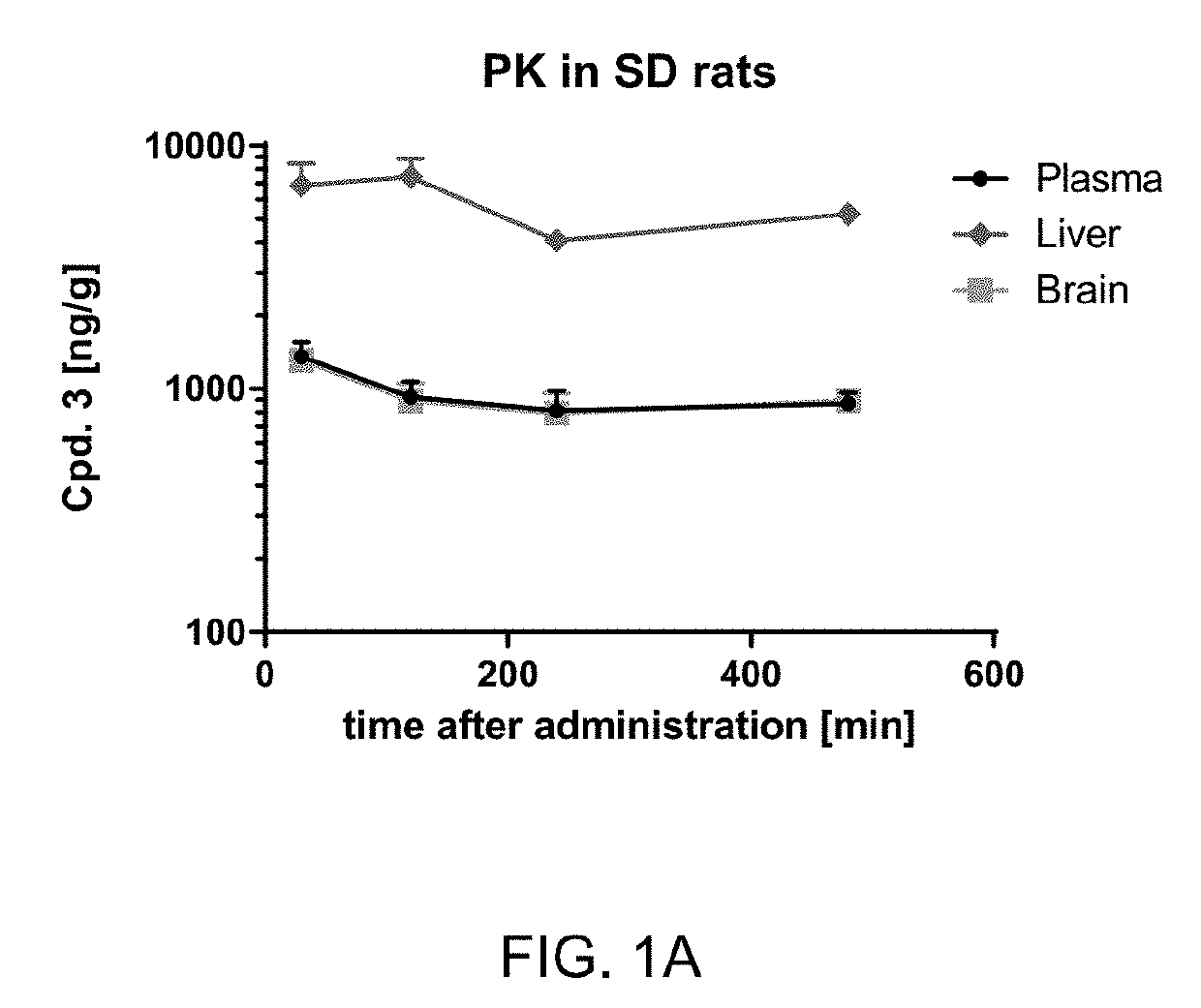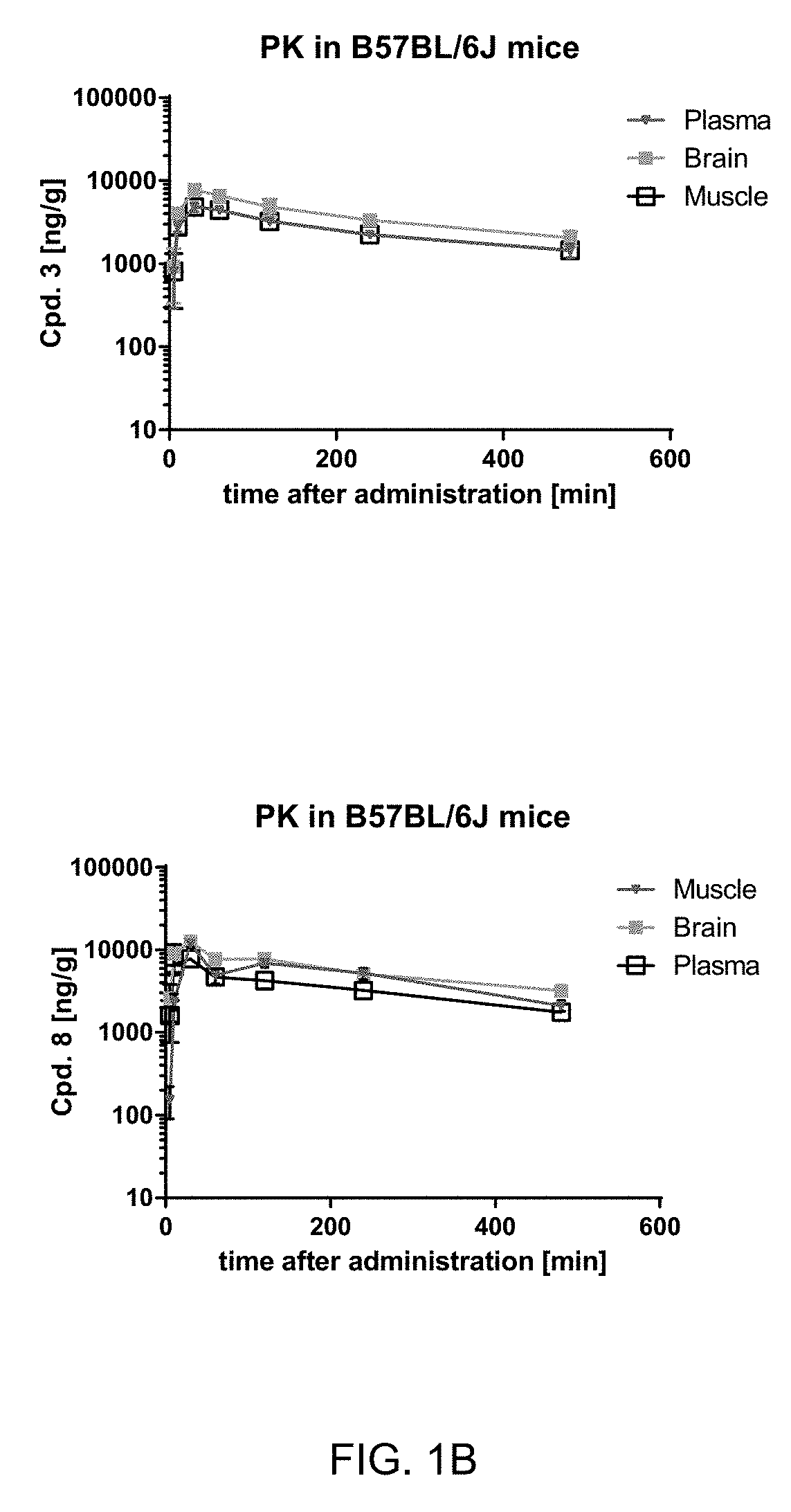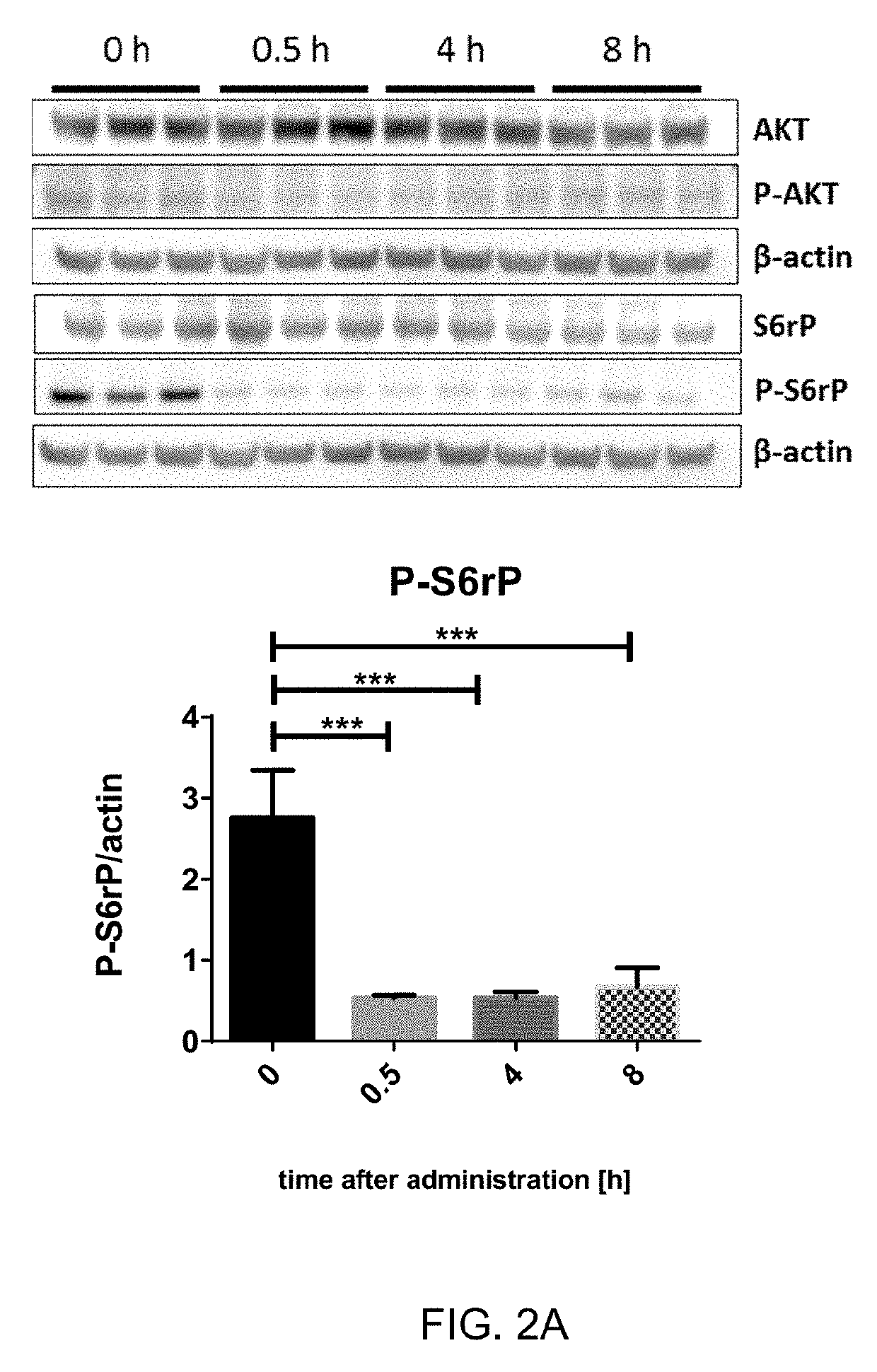Treatment of neurological disorders
a neurological disorder and treatment technology, applied in the field of neurological disorders, can solve the problems of low tolerability, low physicochemical properties of compounds, and low tolerance, and achieve the effects of reducing the formation of neurotoxic mutant huntingtin aggregates
- Summary
- Abstract
- Description
- Claims
- Application Information
AI Technical Summary
Benefits of technology
Problems solved by technology
Method used
Image
Examples
example 1
Preparation of Intermediate Compounds and of Compounds of the Invention
[0394]Preparation of Intermediate Compounds
[0395]The following methods were used to prepare the intermediates compounds used to produce compounds of formula (I).
Method 1: 8-(4-(3-oxa-8-azabicyclo[3.2.1]octan-8-yl)-6-chloro-1,3,5-triazin-2-yl)-3-oxa-8-azabicyclo[3.2.1]octane (i1)
[0396]
[0397]3-Oxa-8-azabicyclo[3.2.1]octane.HCl (Advanced ChemBlocks Inc, product number A-861, 2.00 g, 13.4 mmol, 2.0 eq.) and N,N-diisopropylethylamine (4.80 mL, 27.6 mmol, 4.1 eq.) are charged into a flask and dissolved in dichloromethane (20 mL). The flask is placed in an ice bath and the solution subsequently cooled down to 0° C. This solution is then added dropwise to a solution of cyanuric chloride in dichloromethane (20 mL) at 0° C. The resulting reaction mixture is stirred overnight, while it is allowed to warm up to room temperature. Additional dichloromethane (100 mL) is added and the organic layer is washed with a saturated aqu...
example 2
In Vitro mTOR Binding Assay and in-Cell Western Blot
[0605]In Vitro mTOR Binding Assay
[0606]N-terminally GST-tagged mTOR (Cat. No. PR8683B; 0.45 mg / ml; truncated version: amino acids 1360-2549), Alexa Fluor® 647 labeled kinase Tracer 314 (Cat. No. PV6087), LanthaScreen Eu-anti-GST Tag antibody (Cat. No. PV5594) were purchased from Life Technologies. The 1×mTOR Kinase Buffer consists of 50 mM HEPES pH 7.5, 5 mM MgCl2, 1 mM EGTA, and 0.01% Pluronic F-127 (Sigma Cat. No. P2443-250G).
[0607]A 10-point 4-fold serial dilution (highest concentration at 10 μmol / L and lowest concentration at 40 pmol / L) of each compound was tested for mTOR binding in duplicate in a 384-well plate. To perform the LanthaScreen kinase binding assay 5 μl of the test compounds concentrated 3× the final concentration, 5 μl of 9 nM GST-mTOR / 6 nM Eu-anti-GST antibody mixture and 5 μl of 30 nM Tracer 314 solution were mixed together resulting to a final concentration of 3 nM GST-mTOR, 2 nM Eu-anti-GST antibody and 10 nM...
example 3
Tolerability of Compound 3 and Compound 8 in Mice
[0613]Maximal Tolerated Dose (MTD) of Cpd. 3 and Cpd. 8 in BALB / c Nude Mice
[0614]In order to find a dose that could be used for further experiments and in order to show tolerability of compounds of the present invention, female BALB / c nude mice were treated with Cpd. 3 and Cpd. 8 by per oral (p.o.) gavage twice for five days with a two day dose holiday in between. Compounds were administered in the following vehicle: 20% Hydroxypropyl-3-cyclodextrin (HPBCD), 10% DMSO and 70% water. The major endpoint was to evaluate the body weight loss and animal survival. The body weights were recorded daily for the dosing days and at least twice weekly thereafter. The animal death was checked daily for survival. Animals were to be evaluated for 7 days post the final dose. The tolerated dose was defined as the dose that results in less than 20% mean body-weight loss, and no treatment related death during the study. The randomized block design was us...
PUM
| Property | Measurement | Unit |
|---|---|---|
| Molar density | aaaaa | aaaaa |
| Fraction | aaaaa | aaaaa |
| Fraction | aaaaa | aaaaa |
Abstract
Description
Claims
Application Information
 Login to View More
Login to View More - R&D
- Intellectual Property
- Life Sciences
- Materials
- Tech Scout
- Unparalleled Data Quality
- Higher Quality Content
- 60% Fewer Hallucinations
Browse by: Latest US Patents, China's latest patents, Technical Efficacy Thesaurus, Application Domain, Technology Topic, Popular Technical Reports.
© 2025 PatSnap. All rights reserved.Legal|Privacy policy|Modern Slavery Act Transparency Statement|Sitemap|About US| Contact US: help@patsnap.com



